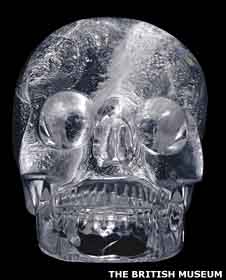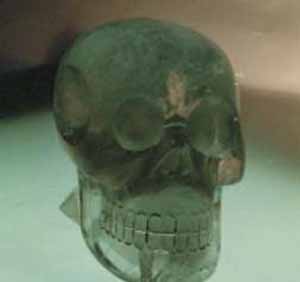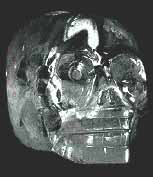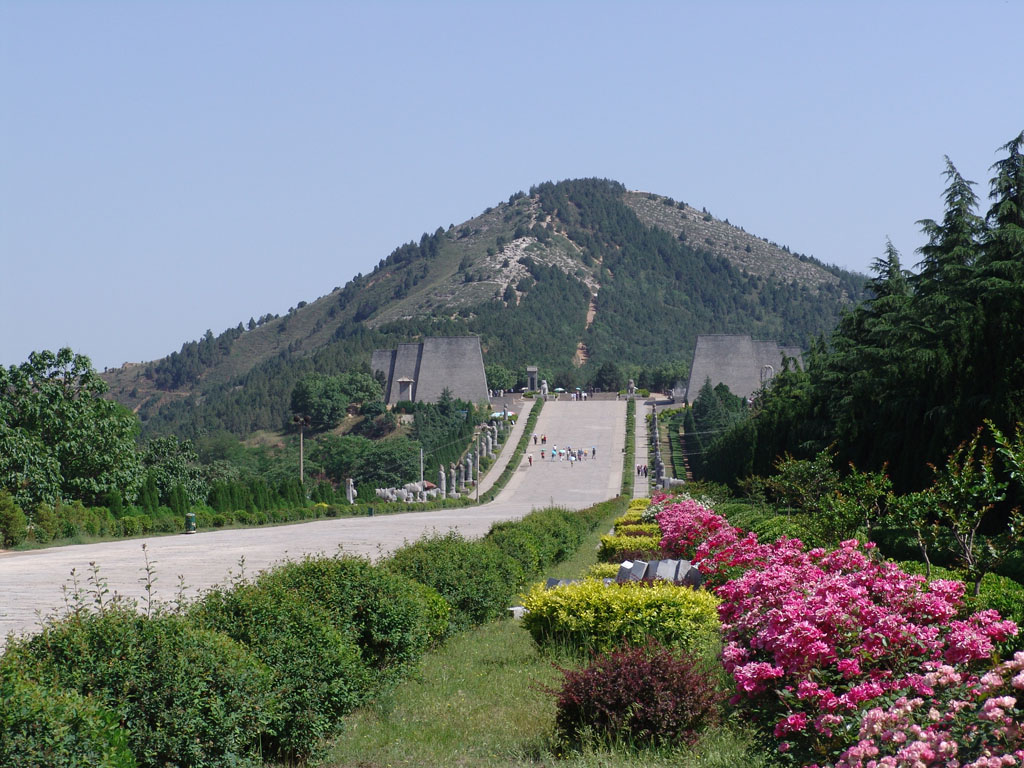TERRIFYING Creatures You Better HOPE Are EXTINCT!
/When we think of prehistoric monsters, we probably think of dinosaurs, and when we think of dinosaurs we most likely think of the Trex, or maybe the velociraptor, honestly I watched the original Jurrasic park at least eight times, seen all the sequels and those are only dinosaurs I can name. Oh, wait, pterodactyl, Triceratops... the Abominable Rex. Anyway were way more crazy monsters that would have eaten us in one bite and we really don’t know as much about these prehistoric creatures as we should, so in case they all get cloned again in the near future, or you happen to wander into the middle of the earth here’s what you should know about some of the most terrifying creatures to have ever existed.
1. Gigantopithecus (GIGANT-Opithecus)
The Gigantopithecus is basically King Kong, I mean if you have the word Giganto in your name you better be huge. it was a giant ape, closely related to the orangutan that existed from perhaps nine million years to as recently as one hundred thousand years ago. It roamed the bamboo forests, jungles, and mountains of China, India, and Vietnam during the Pleistocene Ply Sto Scene period. The Gigantopithecus was supposed to be a vegetarian and could grow up to 10 feet tall and weigh up to 1,190 pounds. It finally went extinct possibly due to climate change or because the last one of them decided to take his date and climb the empire state building.
But there are those who believe the Gigantopithecus is alive and well, hiding out in the forests of the Pacific Northwest and are known today as Bigfoot.
2. Phorusrhacids (Pho-Rus-ACIDS)
These have another name...Terror birds. Ok, you are officially terrifying if people give you your name and it includes the word terror in it and it doesn't matter what it is, as long as it has the word terror in it, it becomes automatically scary. Like dog, terror dog, even something like bunny, terror bunny. Haha, terror bunny. All I can picture is an insane looking Buggs Bunny jumping at me trying to stab me with a carrot. Anyway, terror birds were the top predators in South America and parts of North America during the Miocene, Pliocene, and Early Pleistocene Ply Sta Scene periods. They were unable to fly but could run as fast as a cheetah, and they were massive; the largest species could grow up to 10 feet tall and weigh up to half a ton. Their main weapon was their crazy mutant parrot, eagle looking head, which on its own could be over 3 feet long. It’s so big they can swallow something as large as a dog in one single gulp! However, thanks to its crazy shaped beak, the terror birds could kill and devour prey much larger than a dog you know just a little bigger like a horse or you know, camels. And these Birds would have been terrorizing us if it wasn't for our hero, Colonel Sanders and his secret recipe. One of the secret ingredients is terror.
3. Pulmonoscorpius
If you don’t like scorpions then you prob won’t like these guys very much, they were very similar to modern scorpions, they have front claws and a sting in its tail. But the only thing is these things were around 3 feet in length. So yea, probably can’t just step on them. Besides the obvious huge claws, like today’s scorpions, these things also pack a powerful venom oh and it’s carnivorous. If those things were still alive today, all our houses would need to be equipt with giant can of bug spray or just flamethrowers. Or we need to all keep giant ants as pets.
4. Helicoprion (HELL-i-Cop-Rion)
Ok yea, this sea monster swam around a circular saw as it’s teeth and supposedly it didn't have any upper teeth. So basically this thing is already so scary, I mean it’s got a buzzsaw for teeth that whoever created this thing decided giving it upper teeth just wouldn't be fair. I mean how do you match up with buzzsaw teeth? With power drills? Also, can you imagine if this thing bites its own lip...we all bite our own lips now and then and it hurts if these things bite its own lip it runs the risk of sawing its own head in half.
Anyway, this creature could actually rotate its teeth backward, much like a circular saw blade. And their teeth will continuously grow outwards, creating a spiral as it ages. So kinda like a shark, you should see swimming around if we lived in a resident evil movie
5. Azhdarchidae (Ash-DARKY-DIE)
Imagin being attacked by a pack of Pterodactyl, that would be bad, but imagine getting attacked by a pack of pterodactyl the size of giraffes...that’s like 1000 times worse. The Azhdarchidae were a group of gigantic pterosaurs Taro Saurs that included some of the largest known flying animals of all time with a wingspan stretching 39 feet across. Despite their formidable size, the pterosaurs in the Azhdarchidae family had no teeth.
But come one, it really doesn't matter that they had no teeth, I mean a sparrow has no teeth but if I see a sparrow the size of a giraffe flying towards me I’m still crapping my pants.
6. Spinosaurus (SPINE-Osaurus)
The Spinosaurus is Believed to be the largest predator ever to walk the Earth and lived during part of the Cretaceous period, about 112 million to 97 million years ago, roaming the swamps of North Africa. Spinosaurus means "spine lizard," an appropriate descriptor, as the dinosaur had very long spines growing on its back to form what is referred to as a "sail." To this day scientist are not sure what exactly the function of the sail was, some say it was used to ward off enemies, although I don’t know what other dinosaurs would be crazy enough to battle this thing, well except that T-Rx in Jurassic Park 3 and yea this happened. Others researchers think the sail was used to regulate its body temperature, personally, I think it was a style thing, I think the Spinosaurus was the Mr. T of dinosaurs.
7. Gorgonopsid (GORE-Gonopsid)
The gorgonopsid looks like the hellhound from the original Ghost Busters, and it probably was. These things were the dominant predators during the late Permian period before dinosaurs. Gorgonopsids had a set of deadly saber-teeth and are often the size of rhinos or bigger. They were quite agile and could run really fast, so these things were basically saber-toothed, lizard dogs that were the size of a rhino.
8. Megalodon (MEGA-Lodon)
The Megalodon is probably one of the most insane things that has ever lived. The Megalodon is so terrifying, it makes great white sharks seem like puppies and the movie Jaws an underwater version of Bambie. The megalodon was over 60 ft in length, not only was it 4 times the size of a great white. it was the largest predatory marine creature in the history of the planet. whereas a modern Great White Shark clamps its jaws shut with about 1.8 tons of force Megalodon chomped down on its prey with a force of between 10.8 and 18.2 tons
This beast ruled the seas for more than 16 million years and was the perfect killing machine. It was built for speed and armed with teeth the size of a car tire. So you must be glad that this thing went extinct right? A common belief among the scientific community is that Megalodon went extinct around 1,5 million years ago. But there is a group of scientists who believe Megalodon could actually be alive today. Lurking in the depths of our ocean 95% of which remain unexplored. Could happen, I mean we didn’t even know The Megamouth Shark until 1976 and even that was an accidental discovery. So maybe this crazy beast could still be out there somewhere.
Can you imagine living in a place and time where all these creatures plus 1,000 others that existed? And our goal every day would just to stay alive. I mean even if we had guns, I've watched all the Jurassic Park movies, and if I learned anything it’s that bullets apparently don’t work on dinosaurs. I think if we ever do clone all these things, or somehow that Journey to the Center of the Earth thing is real, I would try to find baby T-Rex dinosaur eggs and then somehow hatch them and convince them that I’m their father, so they’ll fight on my side. And I’ll name all of them Luke… Let me know how you will survive.
Sources:
https://www.thoughtco.com/deadliest-dinosaurs-1091958
http://all-that-is-interesting.com/terrifying-prehistoric-creatures
https://www.cnet.com/pictures/terrifying-extinct-animals/



















































